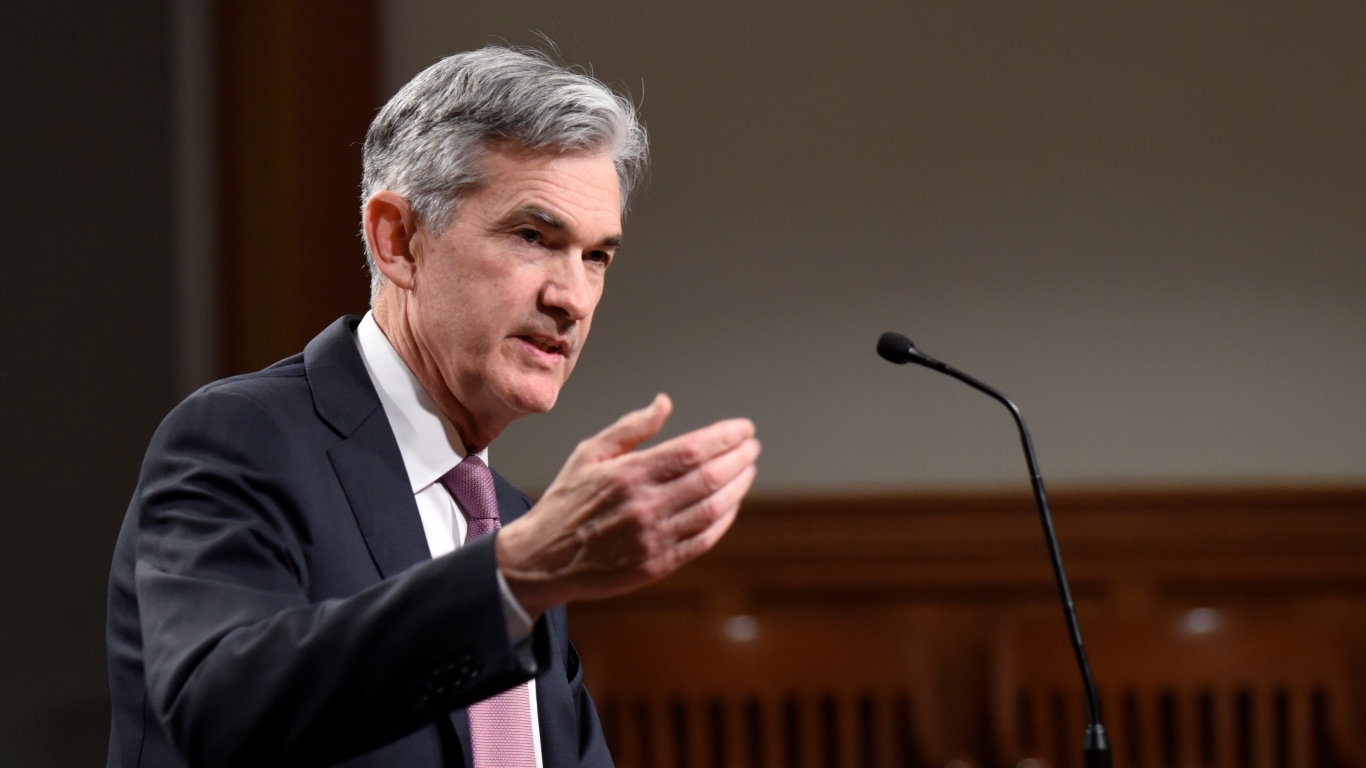Investing
Fed Chair Powell Suggests When Interest Rates Cuts Will Be Appropriate

Published:
Last Updated:

The Semiannual Monetary Policy Report is being made to Congress this week, and Federal Reserve Chair Jerome Powell was testifying before the Committee on Financial Services in the U.S. House of Representatives on Wednesday, July 10. With the economic data having been far less robust and with growth slowing here and abroad, the financial markets have been a bit impatient and anxious about when exactly the next Fed interest rate cut would arrive. Certain comments have clarified when the markets should expect a rate cut, and that is sending stocks to challenge new highs.
One word on the timing of a rate cut stood out in Powell’s prepared remarks: “appropriate.”
Powell has made many references to the strength of the economy up until recent months. The Fed’s current baseline economic outlook is for growth to remain solid, for the labor markets to stay strong and even for inflation to move back up over time to the FOMC’s 2% inflation objective. But the devil is in the details.
Powell is citing uncertainties having increased in recent months as economic momentum has slowed in some major foreign economies. He noted that the weakness could affect the U.S. economy as a number of government policy issues have yet to be resolved. Some specifics were named — trade developments, the federal debt ceiling and even Brexit — and Powell even warned of a risk that weak inflation will be even more persistent than currently anticipated.
While Powell has pledged to monitor these conditions and has kept the federal funds rate in the 2.25% to 2.50% target range so far in 2019, his view has been that the FOMC would be patient as the committee determined what future adjustments might be appropriate in the fed funds rate.
Powell’s prepared remarks gave further expectations about when a rate cut could be expected:
At the time of our May meeting, we were mindful of the ongoing crosscurrents from global growth and trade, but there was tentative evidence that these crosscurrents were moderating. The latest data from China and Europe were encouraging, and there were reports of progress in trade negotiations with China. Our continued patient stance seemed appropriate, and the Committee saw no strong case for adjusting our policy rate.
Since our May meeting, however, these crosscurrents have reemerged, creating greater uncertainty. Apparent progress on trade turned to greater uncertainty, and our contacts in business and agriculture report heightened concerns over trade developments. Growth indicators from around the world have disappointed on net, raising concerns that weakness in the global economy will continue to affect the U.S. economy. These concerns may have contributed to the drop in business confidence in some recent surveys and may have started to show through to incoming data.
In our June meeting statement, we indicated that, in light of increased uncertainties about the economic outlook and muted inflation pressures, we would closely monitor the implications of incoming information for the economic outlook and would act as appropriate to sustain the expansion. Many FOMC participants saw that the case for a somewhat more accommodative monetary policy had strengthened. Since then, based on incoming data and other developments, it appears that uncertainties around trade tensions and concerns about the strength of the global economy continue to weigh on the U.S. economic outlook. Inflation pressures remain muted.
Powell’s full prepared remarks are generally identical the following day, but the questions and answers session is where the markets may find more unexpected comments.
The CME FedWatch Tool currently has a 79.6% chance that the fed funds rate will drop to a 2.00% to 2.25% range at the July 31 FOMC announcement. That same tool now even shows a 62.2% chance that the fed funds rate will be down to a range of 1.75% to 2.00% at the September 18 FOMC announcement.
The markets had indicated a weaker opening bell ahead of the comments being released, but at almost 10:00 a.m. the Dow Jones industrials were up almost 200 points and the S&P 500 was up almost 23 points and over the mystical 3,000 level. The yield on the 10-year Treasury note was up marginally at 2.06%, and the yield on the 30-year Treasury was up at 2.56%.
Want retirement to come a few years earlier than you’d planned? Or are you ready to retire now, but want an extra set of eyes on your finances?
Now you can speak with up to 3 financial experts in your area for FREE. By simply clicking here you can begin to match with financial professionals who can help you build your plan to retire early. And the best part? The first conversation with them is free.
Click here to match with up to 3 financial pros who would be excited to help you make financial decisions.
Have questions about retirement or personal finance? Email us at [email protected]!
By emailing your questions to 24/7 Wall St., you agree to have them published anonymously on a673b.bigscoots-temp.com.
By submitting your story, you understand and agree that we may use your story, or versions of it, in all media and platforms, including via third parties.
Thank you for reading! Have some feedback for us?
Contact the 24/7 Wall St. editorial team.